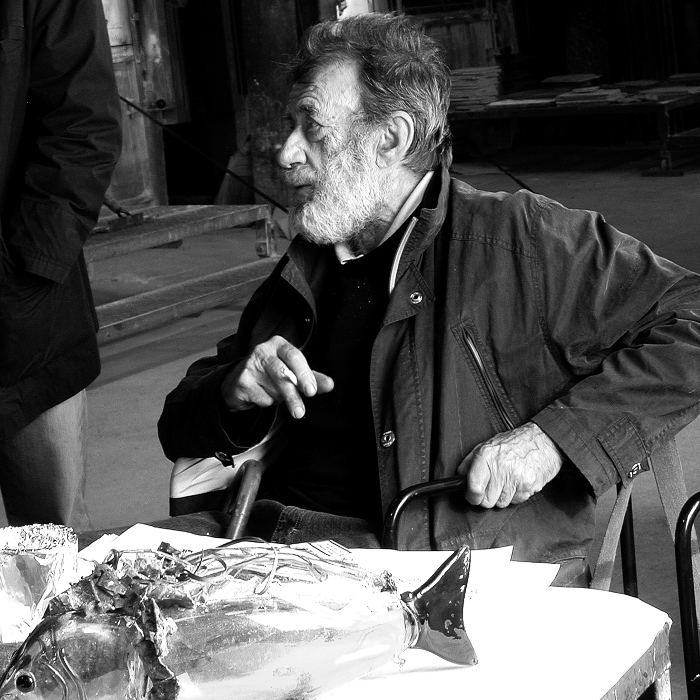
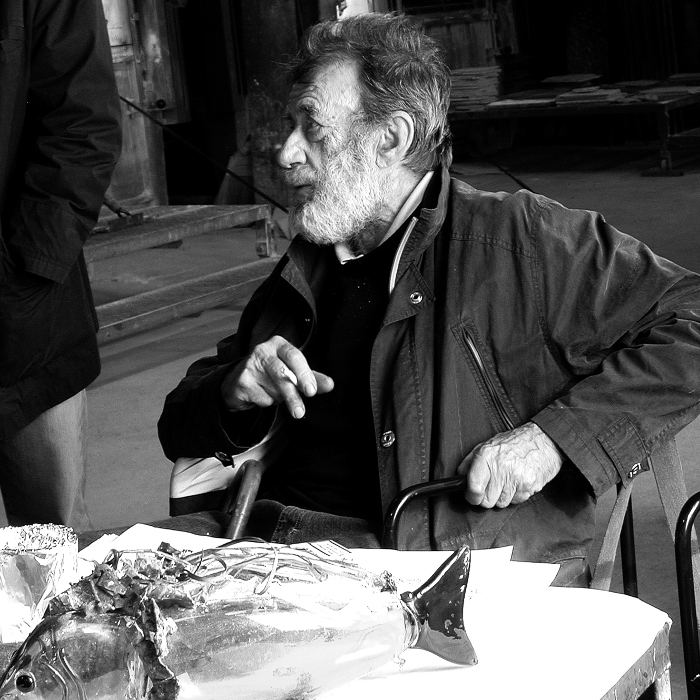
Toni Zuccheri (source: Unforget)
Toni Zuccheri’s artistry in glass design and lighting

Gazza Ladra, drawing of a bird by Luigi Zuccheri (source: Gigarte)
Born in the small village of San Vito al Tagliamento in the Pordenone region in 1936, Toni was the son of the master painter Luigi Zuccheri, who is known for his illustrations of nature and birds. Toni also had a love for nature and animals. He became known for his colorful works of birds and organic vases, often carefully created with experimental techniques and materials.
Zuccheri studied at the faculty of architecture in Venice, where he had the privilege of being mentored by prominent figures such as Ignazio Gardella, Franco Albini and Tobia Scarpa.
In the beginning of the 1960s, Zuccheri began a fruitful collaboration with Venini, one of the finest glass factory’s from Murano, Italy. He quickly learned the art of glassmaking. Early works showcased his mastery of intricate techniques, including the revered “murrine” technique, and featured captivating bird sculptures rendered in vibrant, multi-colored glass. The first collection of birds was presented at the Venice Biennale in 1964. They were never produced in large numbers due to high costs, that makes them very rare and highly sought after nowadays. Now and then, one pops up in a high-end auction with estimates around €50.000.

Hoopoe by Toni Zuccheri, 1963 (source: Wright20)
Lamps designed for Venini
The collaboration between Toni and Venini brought forth many beautiful things. Two ceiling lamps stand out for their unique design. These lamps, known as the Nifea and the Trofei series, were both designed by Toni Zuccheri around 1967. The series share a common thread in their construction, as they both feature the distinctive rilievi glass technique. This technique involves creating raised and embossed patterns on the glass surface. Both the Nifea and Trofei series were produced in a variety of colors.

White Trofei ceiling lamp (source: Phillips)
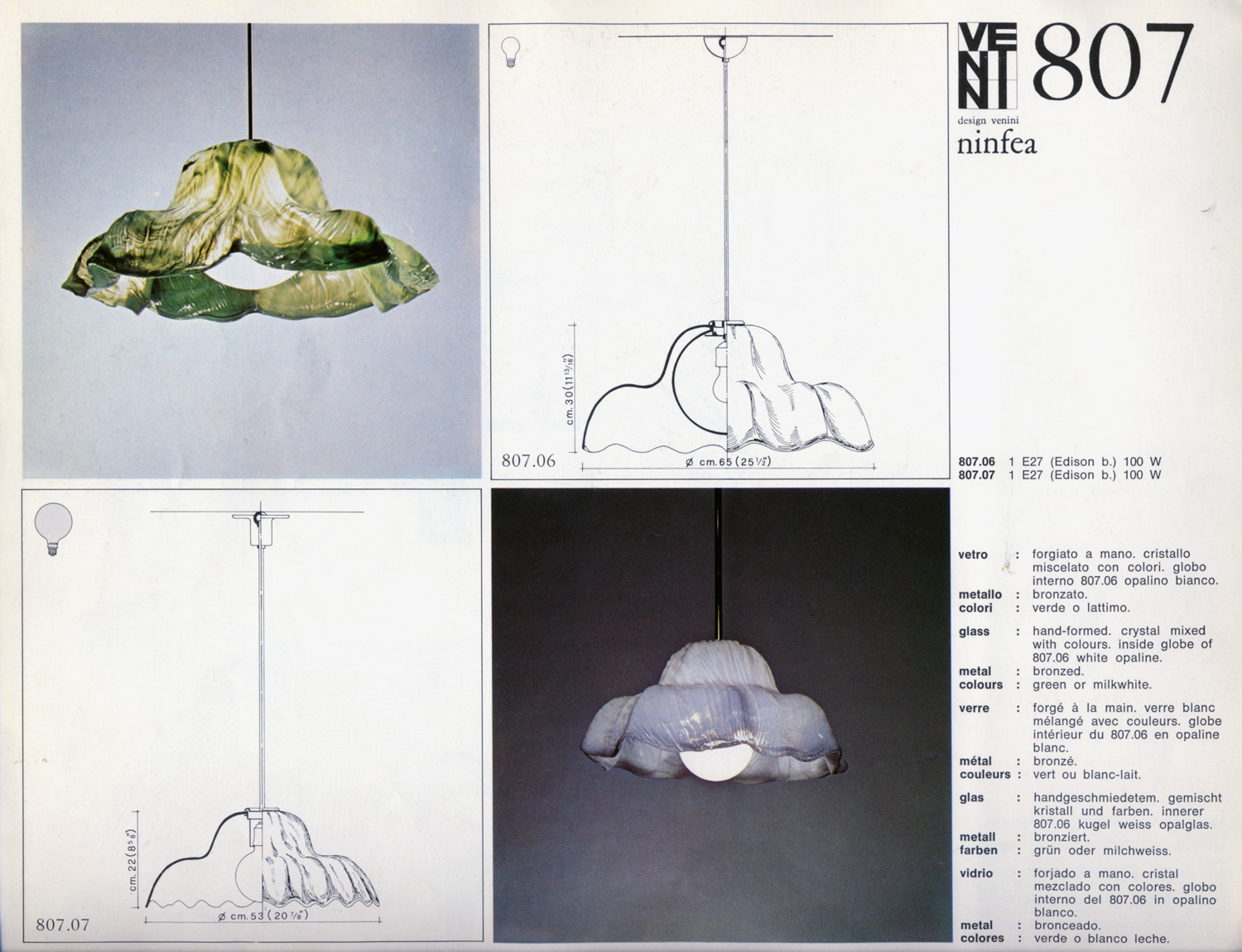
Green Nifea ceiling lamp (source: Venini catalog)
The Membrane lighting series are probably the best known lamps by Toni Zuccheri. The design consists of an interplay between a delicate glass globe and an inner structure, a membrane that divides the sphere in half. Many different variations of this lamp were made. Except for Venini, various other Italian lighting manufacturers like Zonca also made lamps that were inspired by the Membrane design.
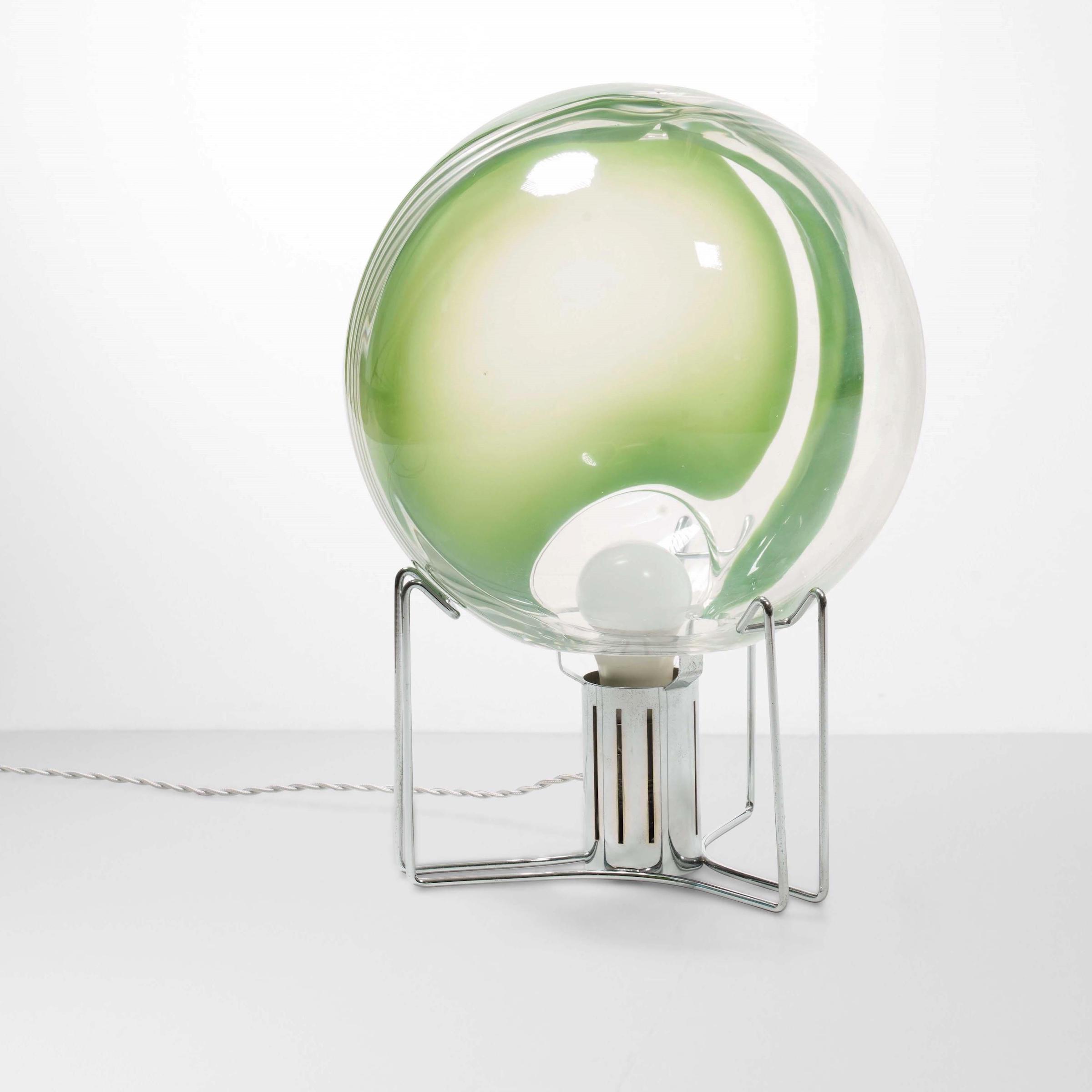
Membrane table lamp (source: Cambi)
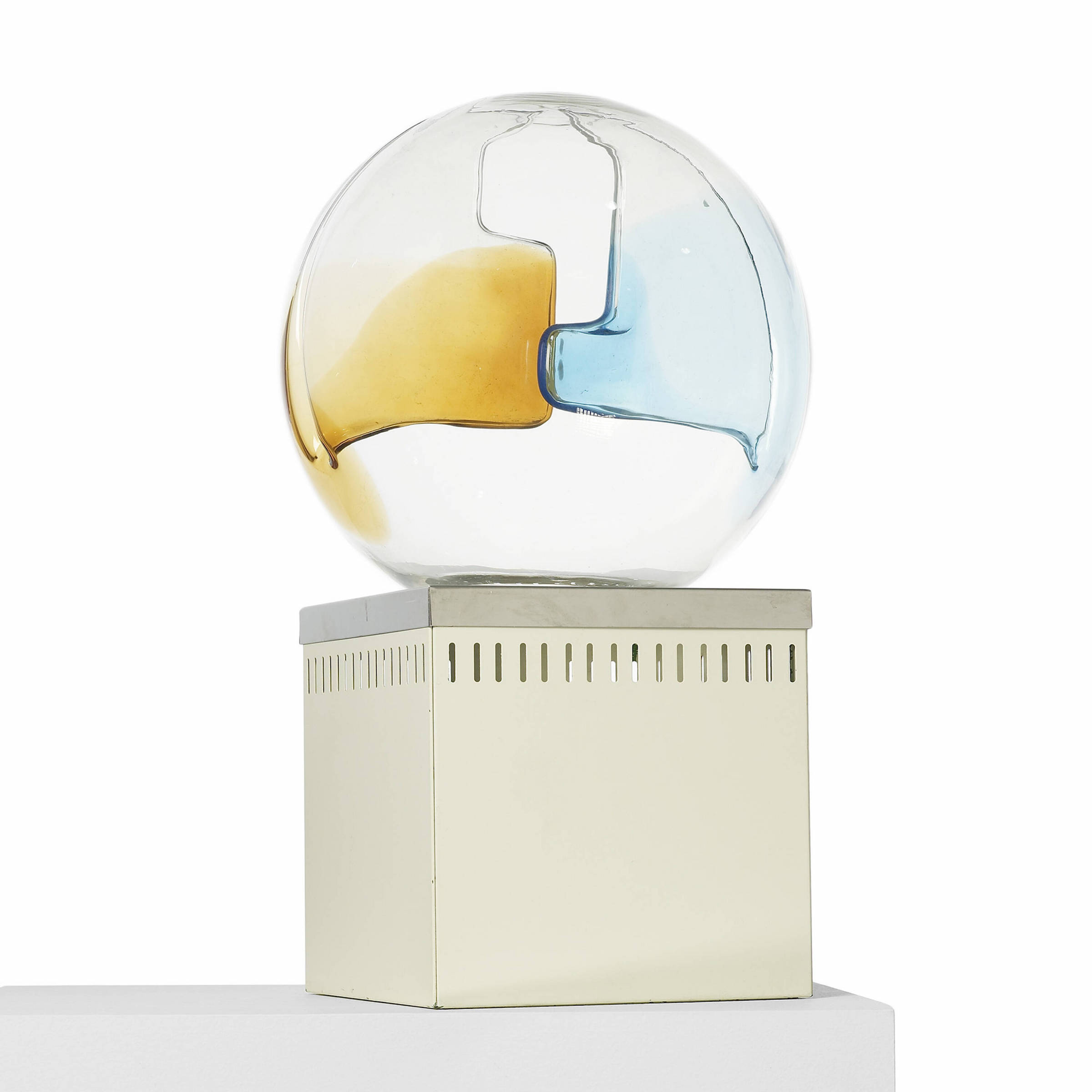
Membrane table lamp (source: Wright20)
Another noteworthy lamp designed by Zuccheri is the Pinocchio pendant series. This hanging lamp features a white opaline glass shade with a colored band on the edge of the glass. It was made in three colors; tea, red and sapphire blue. Zuccheri designed this series during the 1960s.
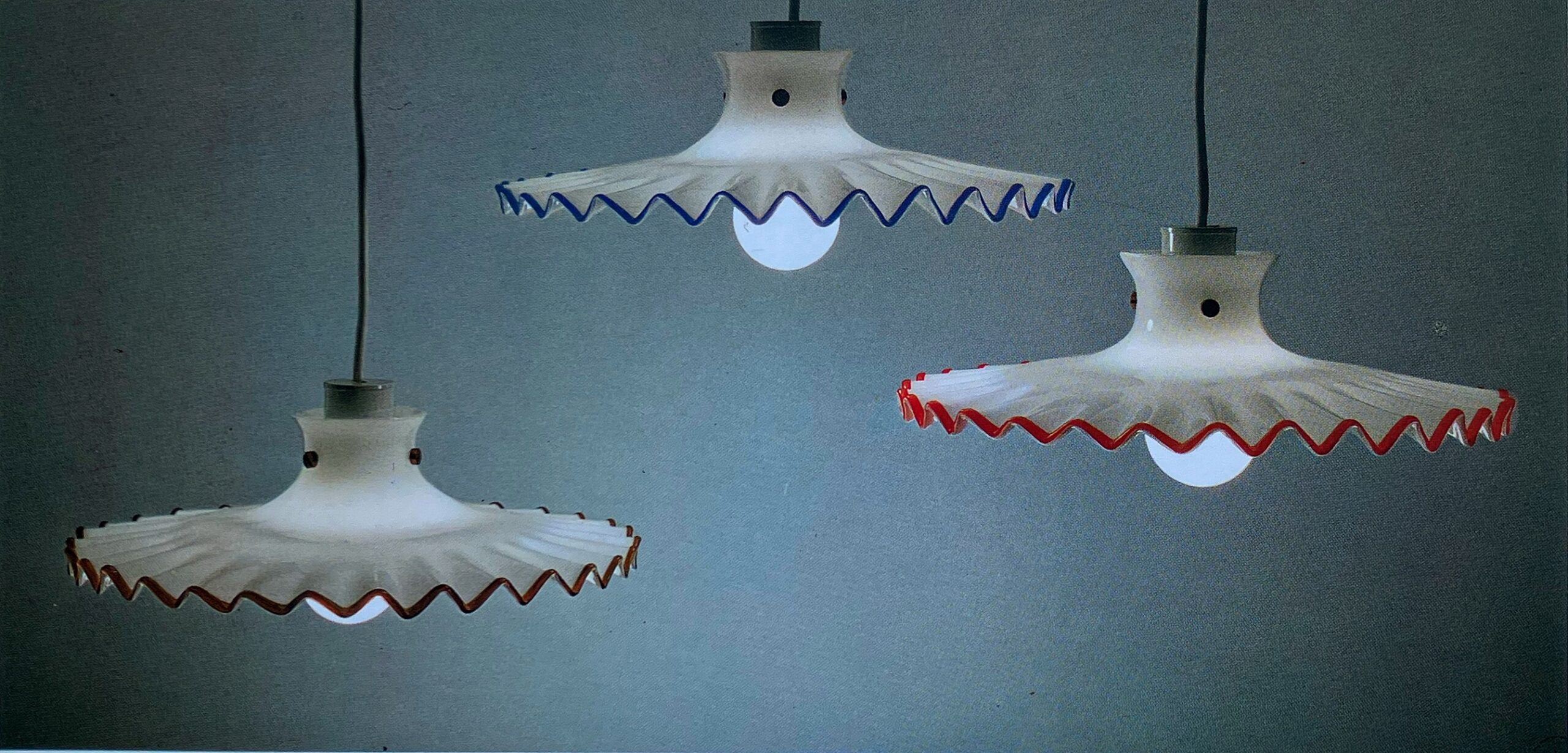
Various Pincchio pendant lamps (source: Venini catalog 1989)
Le Vetrate Grosse, 1965
Inspired by “inner play” of thick glass, with its broken patterns and enchanting empty bubbles, Gio Ponti and Toni Zuccheri devised a plan to infuse glass with vibrant segments of various coloured pastes, adding depth and dimension to their frozen bodies.
However, these thick glass penals posed a challenge due to their immense weight. Traditional lead settings wouldn’t suffice for joining the blocks together. They devised an ingenious solution and conceived the idea of utilizing vertical steel guides to support the hefty glass blocks, ensuring their stability and preserving their aesthetic allure.
The glass factory Venini from Murano brought their vision to life. The result was a collection of breathtaking glass panels, unlike anything seen before. These magnificent creations not only showcased the transparency of colours, but also harnessed the magic of refraction. These glass windows were made as various table lamps, featuring different shapes and colours.
Except from table lamps, the Vetrate Grosse (translated to English: The large stained-glass windows) panels were also transformed into life-size stained-glass windows, like in a church. Each single glass panel has a free independent form and structure, but together they create a breathtaking composition of glass art.

Le Vetrate Grosse composition (source: Domus March 1966)
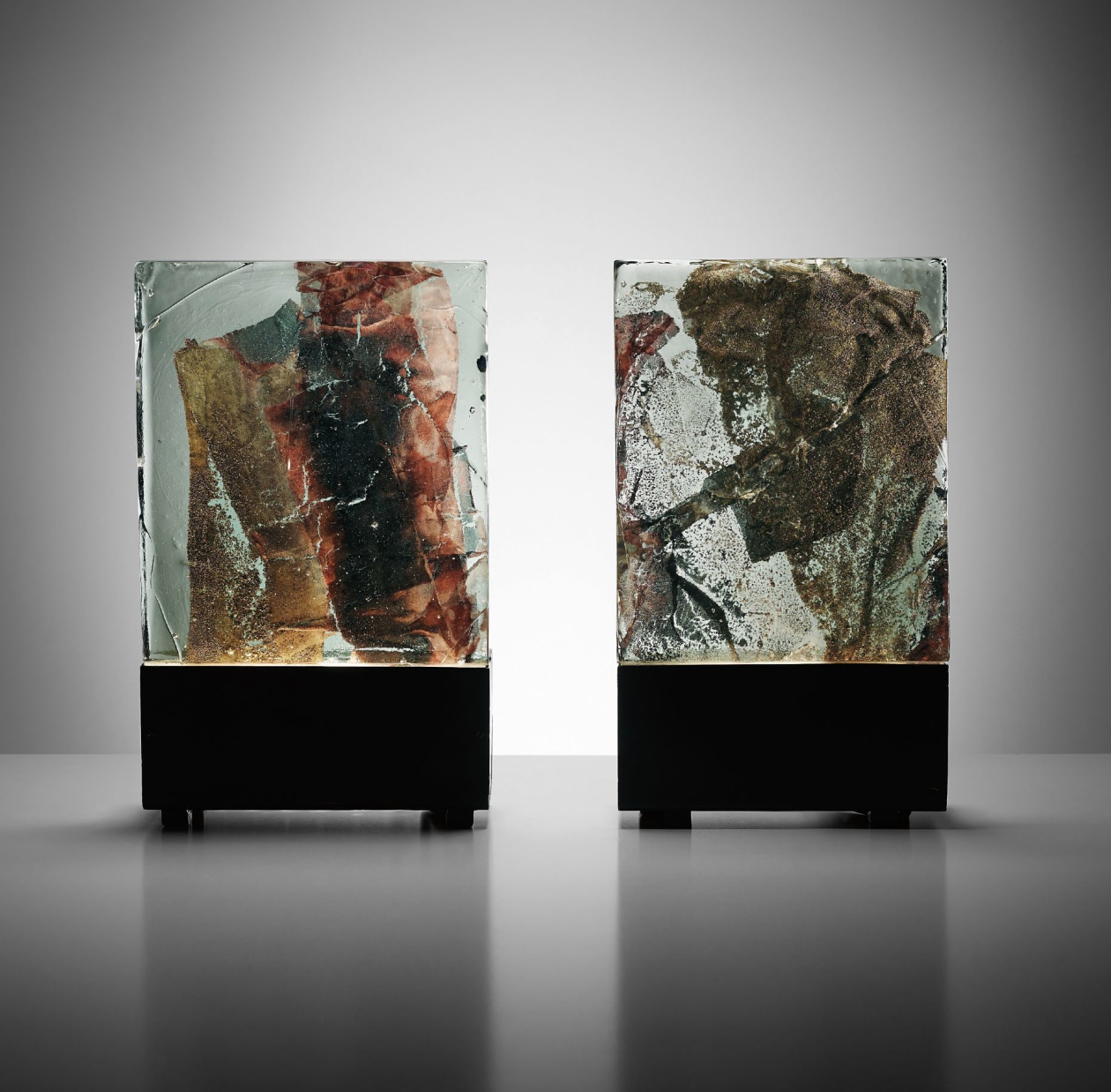
Le Vetrate Grosse table lamps (source: Phillips)
Collaboration with VeArt
One hundred and fifty people, twenty-five ovens, twenty thousand square meters, in Scorzé, Venice. This was VeArt, founded in 1967 in Murano as a subsidiary of Venini. In 1969 it moved to the mainland on the edge of the lagoon to have more space to build a modern and efficient furnace, and in 1972 it separated from the subsidiary. VeArt had a very varied production, ranging from large and small vases, to all kinds of lamps, to luminous ceilings. Other well-known designers at VeArt included Umberto Riva, Giorgio De Ferrari and Sergio Asti.
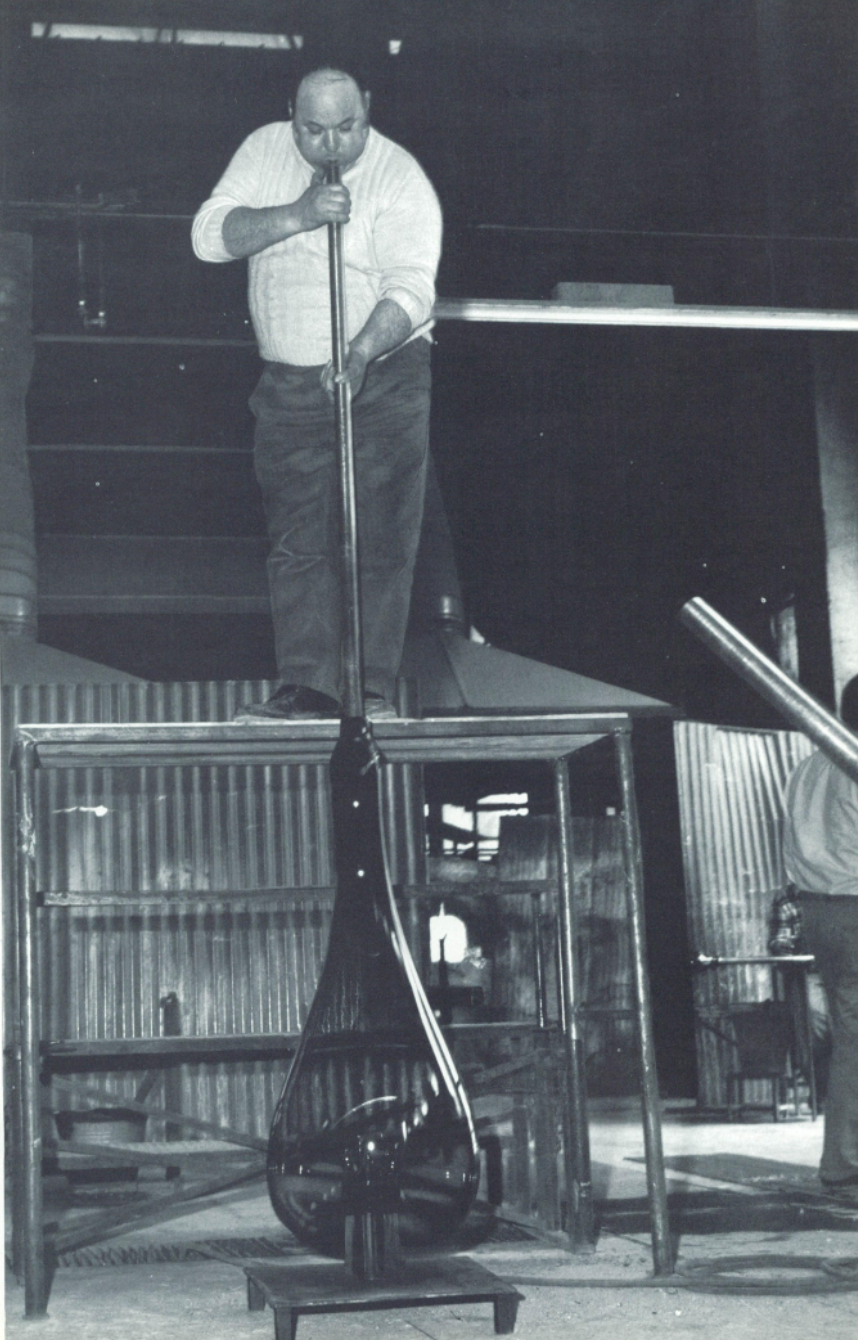
Artisan from VeArt making an Otri vase designed by Toni Zuccheri (Domus September 1974)
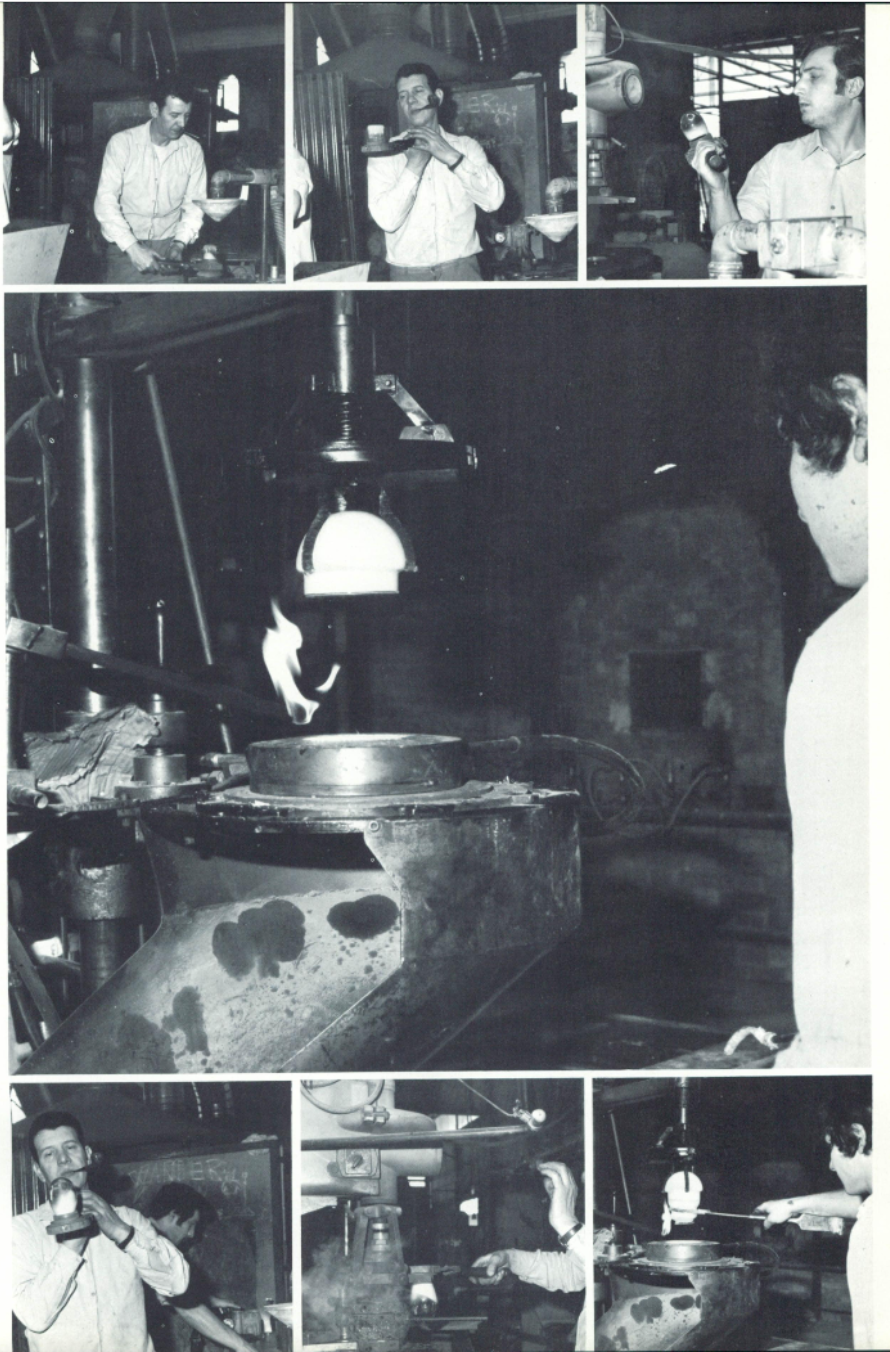
Vetreria VeArt in Scorzé (Domus September 1974)
Zuccheri has created dozens of lamps and other glass objects together with VeArt. A part of his work shows a particular feature: designs with indentations that are pressed into or out of the glass. Exemplifying this unique style, the Nuphar and Zinia lamps stand as prime examples of Zuccheri’s artistry. These distinctive lamps feature a multitude of indentations, ranging from the outer periphery towards the core of the glass structure, resulting in a captivating arachnid-like appearance. When illuminated, the flowing contours of the glass interact with the light source, casting patterns and reflections on the outer surface. Both series were made in different sizes and versions.
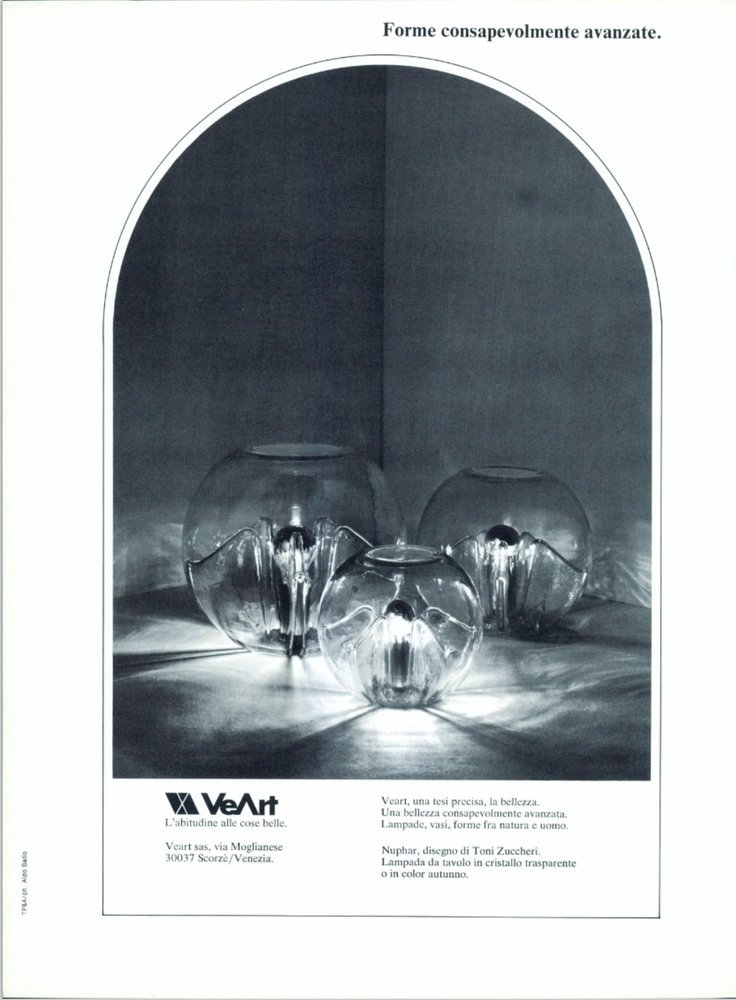
VeArt advertisement of the Nuphar series (source: Domus)
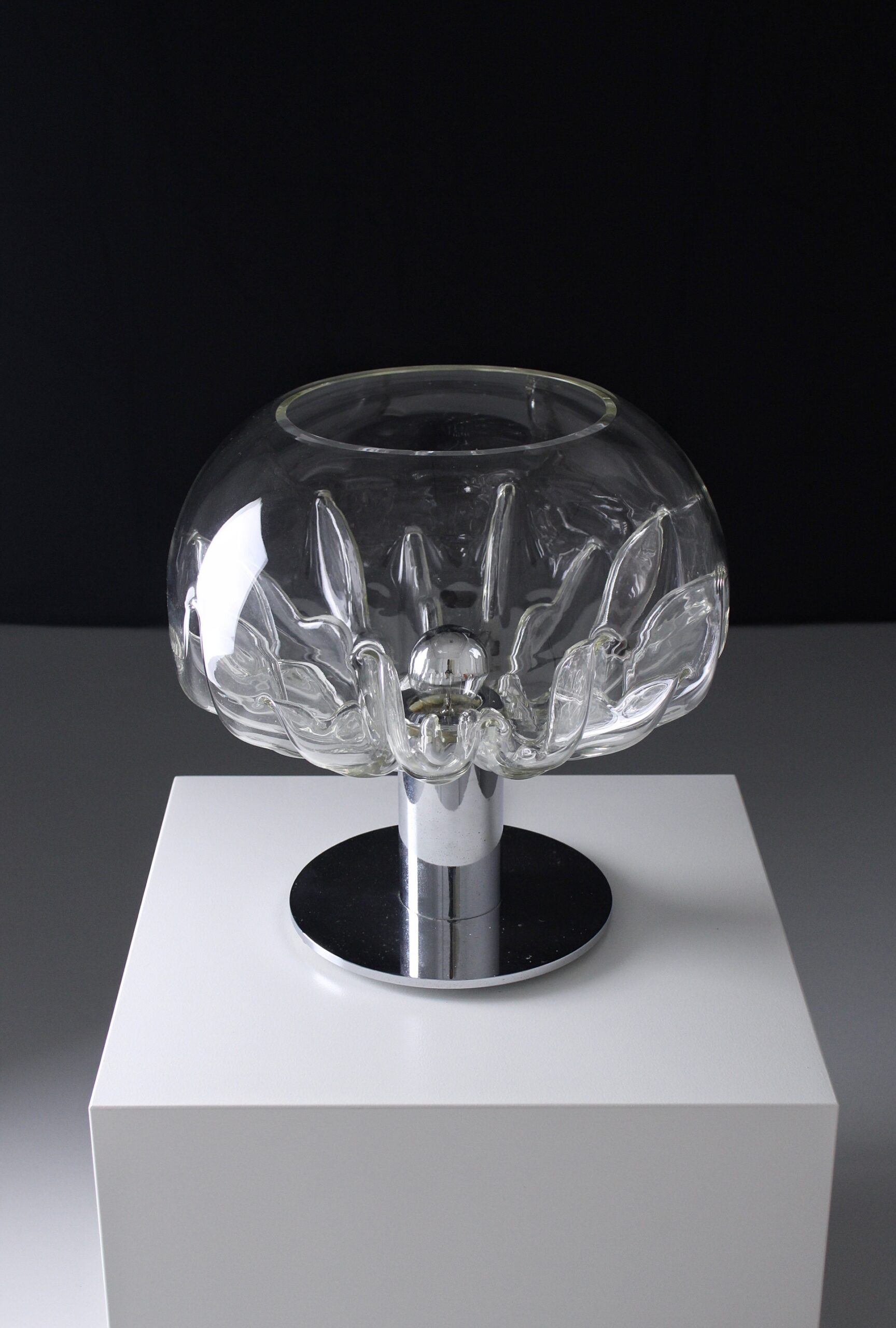
Zinia table lamp (source: Storm Vintage)
The Membrane is also reflected in Zuccheri’s glassware. It appears to be in the form of living tissue, as if the glass itself were an organism. Zuccheri experimented with glass and designed many objects with an organic character.
A new technique that VeArt used was called “Inserti”. It combines free mouth blowing (no mold) and removable shaping elements, which allows you to obtain a combination of soft and rigid volumes in the same place. This technique was used for several objects that Zuccheri designed.
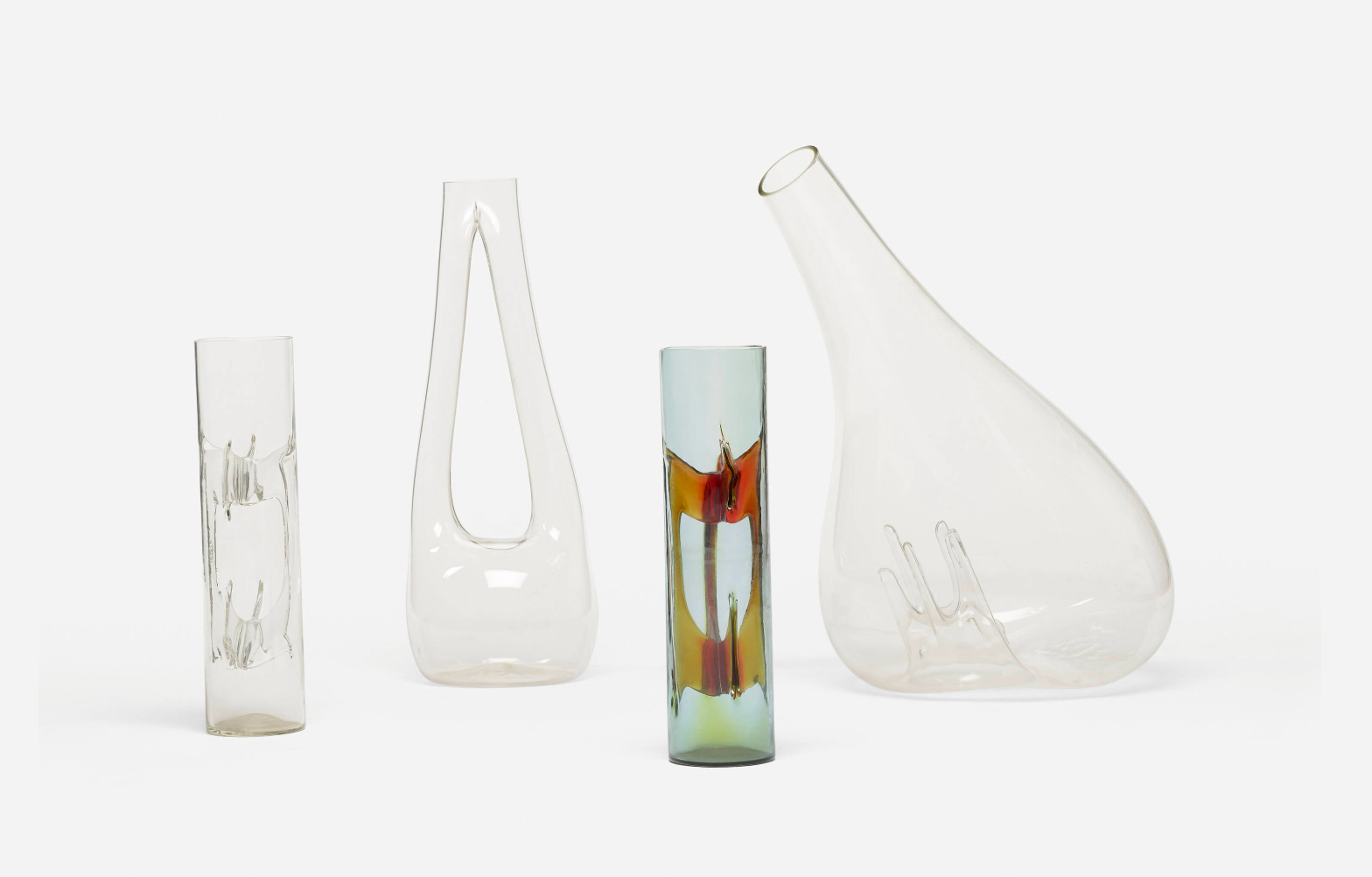
Various organic glass objects by Toni Zuccheri (source: Wright20)

Golia vase by Toni Zuccheri created with the Inserti technique (source: Il Vetro Veneziano VeArt)
Another particularly recognizable feature is the effect of dripping glass. This unique optical illusion captivates viewers, as it seemingly portrays the glass material itself in a state of constant motion, as if it were fluid and slowly cascading downwards like fluid glass. This is a meticulous process that was done by hand. With this technique a glass artisan pressed an instrument into the glass waiting for it to cool down and remain in the desired shape.
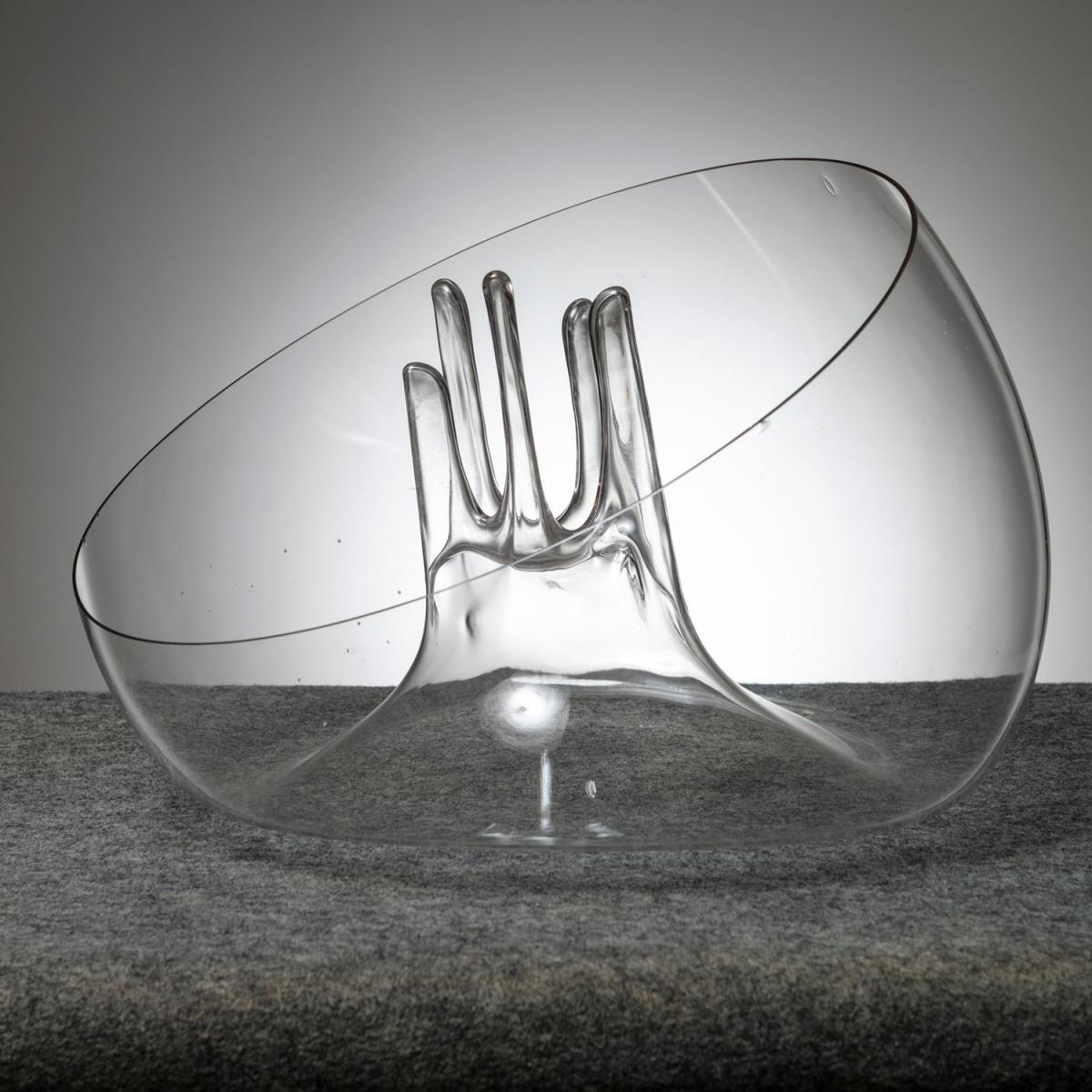
Vulcano vase by Toni Zuccheri (Emanuele Zamponi © Compasso gallery)
Different style:
In a departure from his intricate and colorful designs, Zuccheri ventured into a realm of minimalist elegance with the Civetta and Sagoma lamps. These designs, featuring an identical style, defy expectations with their simplicity. Lacking natural or colorful characteristics, these lamps adopt a strikingly plain white appearance, accentuated by fixed lines that define their form. The Civetta lamp was produced by Francesconi, while the Sagoma lamp emerged from the skilled hands of the VeArt artisans. These rare pieces stand as testament to Zuccheri’s versatility as an artist.
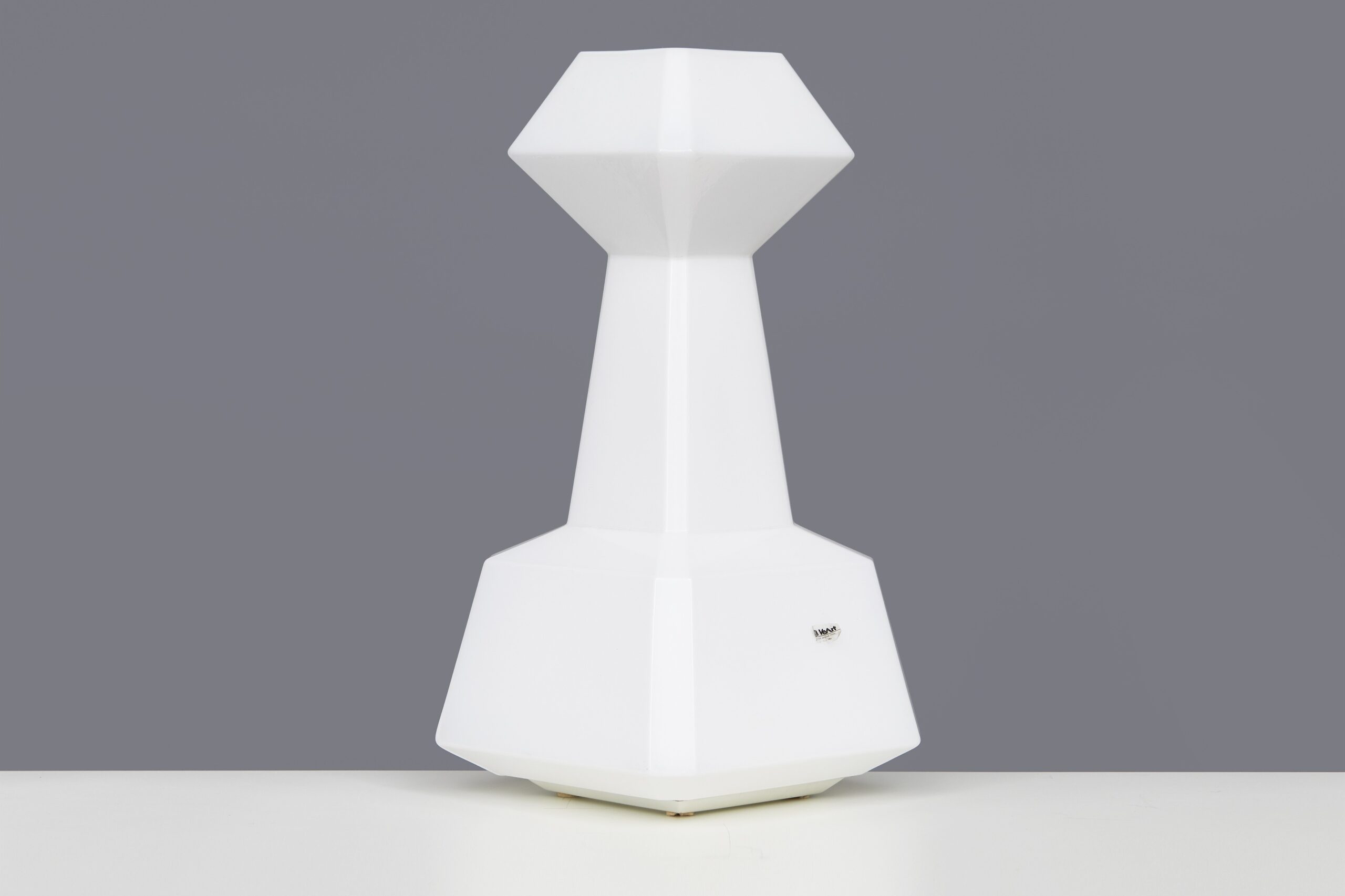
Sagoma table lamp (source: Mediatrade)

